Greenhouse growers should be just that – green. And we don’t only mean with the things they grow; we also mean with how they grow them.
Growing vegetables using environmentally-conscious practices and products is how we ensure the food that you (and we) eat has been produced in a responsible way. At NatureFresh™, we believe our social responsibility is to help create a #fresh future. So this Earth Month, we’re sharing a closer look at how our farm grows sustainably every day!
Rethinking Growth
We Grow Our Plants in Coconut Fiber
Coconut fiber is a natural product made from ground-up coconut husks, and it has also been proven to be an excellent growing medium for our plants! If we didn’t reuse it, this coconut fiber would go to a landfill. At the end of our growing season, this coconut fiber is ground up and used in potting soil. By reusing and then further recycling this coconut fiber, none is wasted!
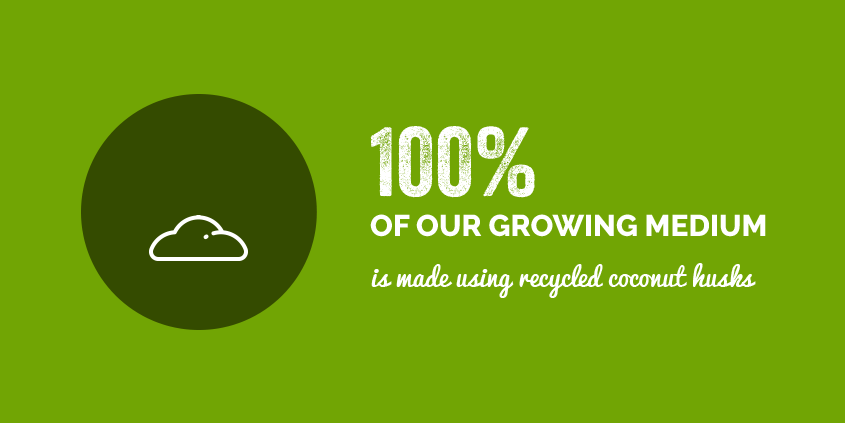
Coconut Fiber Creates a Balanced Growing Environment
A plant’s roots need to grow in a balanced environment to be healthy. Coconut fiber provides the perfect root conditions because it not only retains moisture well, but it also allows for easy drainage of excess water. This means that we can reuse all the water that our plants’ roots don’t take up. With this growing medium, no water is wasted and our plants stay incredibly healthy for the whole season!
Conserving Water
We Irrigate Using a Closed-Loop System
We are committed to being smart with our water usage – we need to do our part and preserve this important resource. Water is necessary for plants to grow and be nourished properly, so we use a closed-loop irrigation system that recirculates nutrient water. This means our plants get the water they need, and excess water gets recycled! That’s right – 0% of our nutrient water is discharged into the environment. Instead, we sterilize and filter it before it is recirculated back to our plants. If this didn’t happen, we would be using about 75% more water. Recirculating and recycling this excess water helps limit wasted water and reduces demand on our community’s water supply.
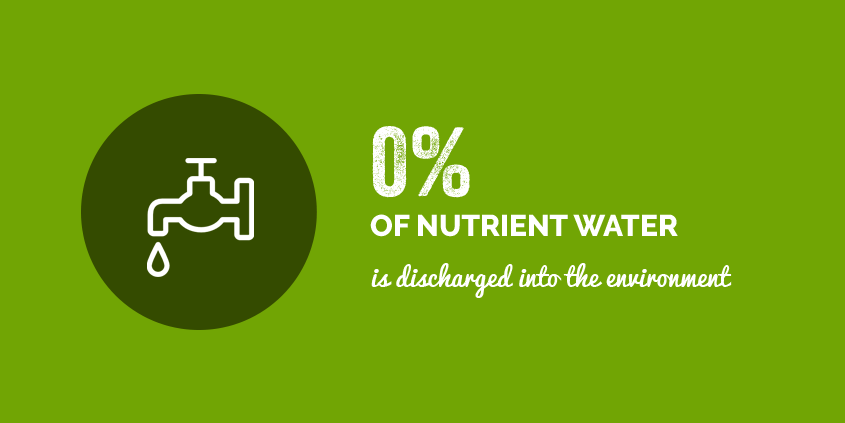
We Reuse Water to Heat Our Greenhouses
Using heating rails, we pump 23,000,000 liters of hot water into our greenhouses every night to keep our plants warm. This water is produced and stored during the day, and because it’s a closed-loop system, it’s always the same water being recirculated! This helps make the most impact while using the least amount of resources possible.
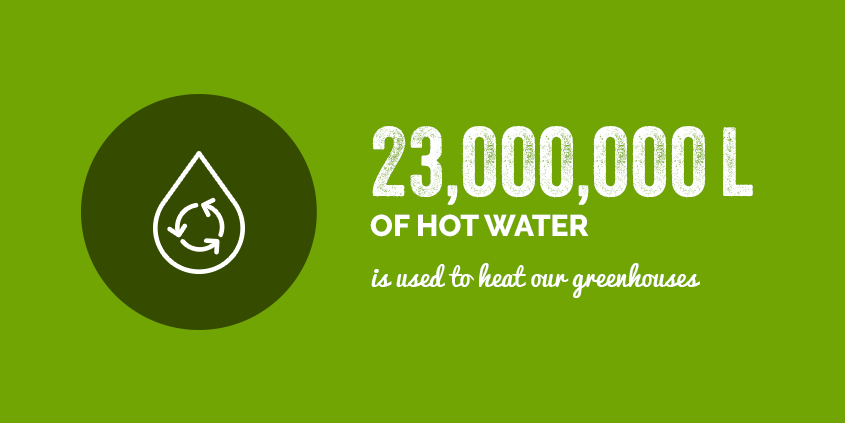
Saving Energy
Energy Screens Keep Our Heating Efficient
We use energy screens on the roofs of our greenhouses to conserve heat and keep our plants shaded from the sun. Our growers use PRIVA, our climate control system, to open and close the screens at certain temperature points. Our energy screens are essential for growing year-round—if we didn’t have energy screens, we would not be able to maintain a warmer temperature in the greenhouse during the winter months, or a cooler temperature during the summer!
Our energy screens allow for approximately 47% energy savings – not only do they help keep the greenhouse warm, they also keep our energy usage low!
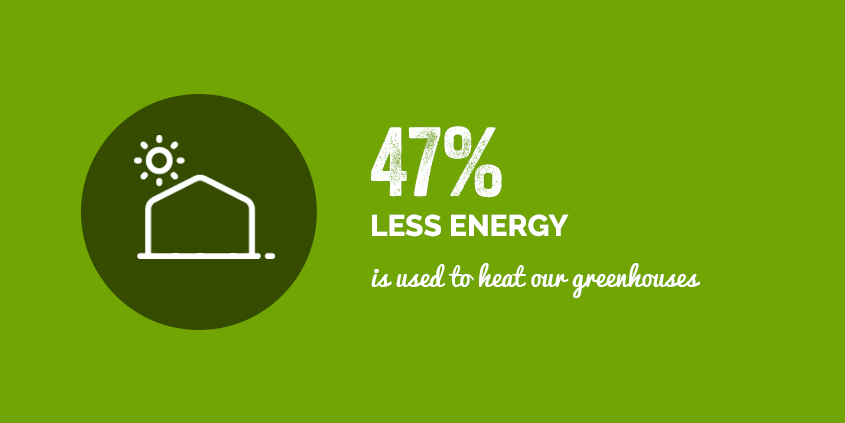
We Burn Clean Wood to Create Heat & Reduce Waste
Our wood boilers burn clean waste wood that would have ended up in a landfill, converting it into heat energy. Instead of letting it be wasted, we use this wood as a clean energy source!
We use approximately 15,000 tons of clean waste wood per heating season – that is 550 to 600 truckloads of wood that would have been thrown away if we didn’t use it productively.
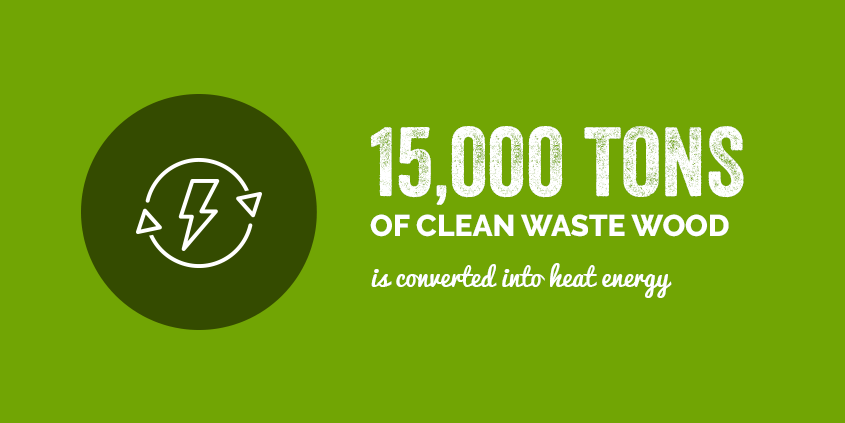
Embracing Biodiversity
We Use 19 Different Types of Good Bugs
Ladybugs, lacewings, and predatory mites are just a handful of the 19 different species of good bugs we use to fight the bad bugs in our greenhouses. By introducing these biologicals, we create a balanced growing environment. Biodiversity is key to a thriving ecosystem!
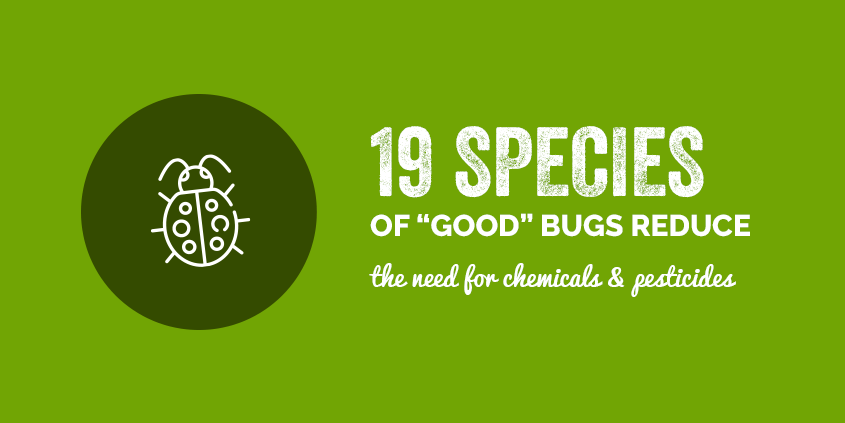
Good Bugs Fight Bad Bugs (No Chemicals Required)
To stay away from using chemical pesticides, we use an Integrated Pest Management (IPM) approach that introduces beneficial bios, or ‘good bugs’, into the greenhouse. These bugs are used to combat ‘bad bugs’, biologicals that cause harm to our crops. By using beneficial bugs in a controlled growing environment, we can rely more on insects and less on chemical pesticides for getting rid of pests.
To learn more about how we grow, check out our Sustainable Growing page!
At NatureFresh™, we’re always introducing new processes and equipment so our greenhouses can be as environmentally-friendly as possible. Join us on our journey to more sustainable practices this Earth Month by learning how you can make your own impact!



